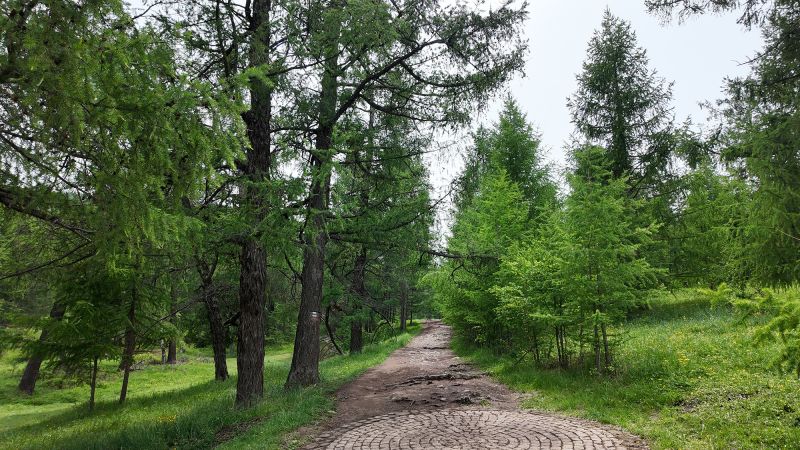Many people associate the title of the world’s first national park with Yellowstone in the United States, established in 1872. Yet, a lesser-known contender lies just south of Ulaanbaatar, Mongolia: Bogd Khan Uul. This mountain has a history that dates back to the 13th century, when it was revered by the Mongol empire, founded by Genghis Khan.
Historically, the area around Bogd Khan Uul was protected by Toghrulkhan, a close ally of Genghis Khan’s father. According to the historical text “Secret Lives of the Mongols,” Toghrul prohibited hunting and logging in the region as early as the 1200s. This long-standing respect for the land laid the foundation for its modern designation as a UNESCO biosphere reserve in 1996.
Visitors to Bogd Khan Uul experience a serene contrast to the bustling capital. The park is home to the Terelj River, which winds through forests of pine, birch, and aspen, creating a tranquil environment filled with wildlife. Rare species like the musk deer and Arctic hare thrive here, alongside eagles, vultures, and wild boars. This biodiversity is attributed to the park’s protective status that has been upheld for centuries.
Historical Significance and Claims to Fame
The significance of Bogd Khan Uul extends beyond its ecological richness. Its name translates to “the Khan’s saint’s mountain,” reflecting its spiritual and cultural importance to the Mongolian people. Saruul-Erdene Myagmar, a Mongolia specialist at the Library of Congress, highlights the mountain’s sacred status, noting that it is revered across Mongolia.
The claim for Bogd Khan Uul as the oldest national park stems from a request made by Mongolian aristocrats to the Qing dynasty in 1778, seeking official protection for the area. In contrast, Yellowstone was officially designated as a national park over a century later. Other regions, such as Australia and Canada, followed suit with their first parks in 1879 and 1885, respectively. Some contend that the Tobago Main Ridge Forest Reserve in the Caribbean, established in 1776, also has a claim to being the oldest protected area.
While many Mongolians regard the 13th century as the inception of Bogd Khan Uul’s protected status, it is clear that its significance has endured through the ages, transcending mere classification.
Visiting Bogd Khan Uul
Despite its historical and ecological value, Bogd Khan Uul remains relatively unknown outside Mongolia. The country’s landlocked geography and limited international tourism have contributed to this obscurity. However, Mongolia is actively working to boost its tourism sector, aiming for it to contribute 10% to the national economy by 2030. In 2024, Mongolia welcomed approximately 808,000 foreign tourists, the highest number recorded.
Visitors often combine a trip to Bogd Khan Uul with a visit to the nearby Zaisan Hill, which features a memorial dedicated to soldiers from Mongolia and the Soviet Union who perished during World War II. The hill offers panoramic views of Ulaanbaatar, although air quality can affect visibility. The northern entrance of Bogd Khan Uul is easily accessible from Zaisan, where various trails cater to all skill levels.
For those seeking adventure, the remnants of the Manzushir Monastery are located on the mountain. Once a significant Buddhist site, the monastery was destroyed in 1937 during political upheaval but remains a testament to the region’s rich history.
Accommodation options include rustic ger camps, where visitors can experience traditional Mongolian hospitality while enjoying the tranquility of the park. Stargazing and winter snowfalls provide unique experiences for those who choose to extend their stay.
Getting to Bogd Khan Uul is relatively straightforward, as it is located approximately 10 miles south of central Ulaanbaatar. However, heavy traffic can delay travel times, particularly during peak hours. Public transportation options are limited, with taxis being the most common means of getting around. The Chinggis Khaan International Airport serves as the main air hub, connecting Mongolia with several Asian cities.
As Mongolia continues to develop its tourism infrastructure, Bogd Khan Uul stands as a reminder of the nation’s deep historical roots and natural beauty. While the world may recognize Yellowstone as the first national park, Bogd Khan Uul’s claim to that title remains significant for those who understand its story and cultural importance.
